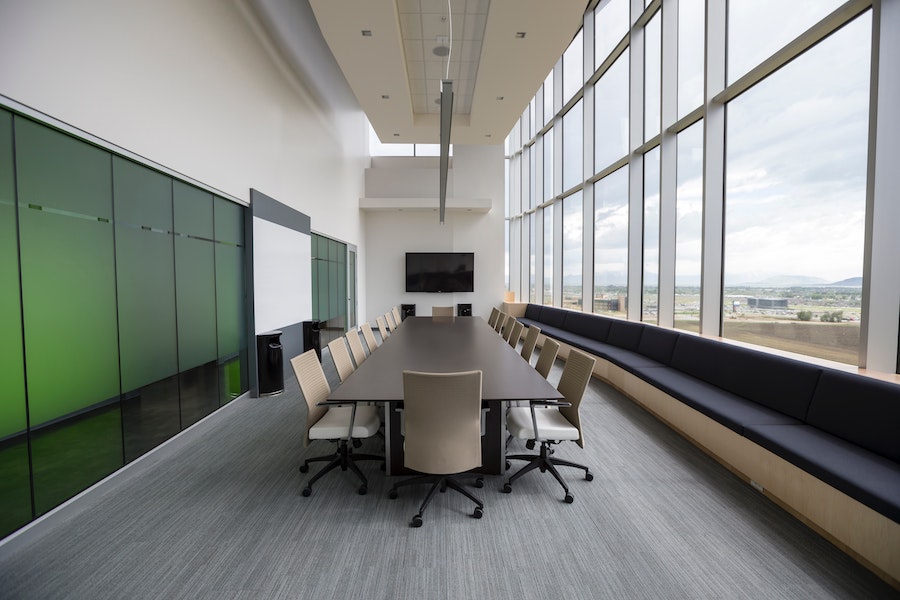
Is the Training Room Dead in the Hybrid Workplace Era?
Reevaluating Training Room Design for New Work Models
Everyone – including us – is talking about how hybrid work models will affect the nature of work and workplaces. While there is much being said, we don't know for sure what will happen. As companies and organizations manage the return to the office, they're adjusting in real-time to the realities of continuing health concerns, a workforce grown comfortable with working remotely, and what to do with physical office space and the technology that supports it.
In the past few months, we’ve put forth our thoughts on these trends and how organizations can rethink collaboration technology and meeting room design. What about one of the largest meeting spaces, the training room? Will that space survive the new hybrid work model? If it does, how will training room design evolve over the next several years here in Tempe, Arizona, or elsewhere? We'll explore some challenges and ideas below.
SEE ALSO: Innovative Streaming Solutions for Online, Flipped, Blended, and Hybrid Learning
What is the Training Experience?
Training rooms have typically been designed to accommodate medium to large audiences. They have standard AV setups with a large central screen, auxiliary screens for viewing on sides and in back, and sound systems to amplify the instructors. In more dedicated spaces, they might take an amphitheater design, such as you might find in an Arizona State classroom in Tempe. Is this experience better than an instructor providing the material over a Zoom meeting with everyone following along on their own screen? With remote training, if someone misses something, a recording and transcript can fill in the holes later.
Whether the fully remote versus an in-person experience is appropriate will depend on the level of interactivity desired. While large groups tend to limit interactivity, it might still be easier for someone to be engaged in person in a venue versus watching and listening on a screen. In an office setting, going to a training room is a change of venue and a different experience. When working at home, everything happens over a relatively small screen on a computer, limiting a sense of connection.
What Will Entice People into Physical Training Rooms?
Companies are already dealing with managing events and training where a certain number of people may have concerns about meeting in person. In companies that have hired more remote workers far away from office workplaces, some may not be looking forward to traveling to sit in a space that may not be as comfortable as the home office. What can companies do to entice workers into physical training spaces?
In much the same way as offices are being reimagined, training rooms may need a makeover. A more immersive experience may be one answer. Much like watching a movie on a computer screen doesn't compare with a theater, the training room may need to be more stimulating. Tiered, comfortable seating with cinema-quality sound and screens can deliver a more engaging experience. In larger spaces, the technology can merge, so everything is available on-screen, on a computer, or on a tablet. Remote attendees can be viewed on a separate screen or part of the large screen, and when questions and answers come, they have the opportunity to be seen and heard. In-room attendees can also participate through conferencing apps too, eliminating the need to project or use an in-room microphone to be heard.
Flexible Spaces
Given that some workers will participate remotely and others in person, flexible training spaces will be key. Depending on the training, tables and seating should be easily reconfigurable for classroom layouts, roundtables, or small collaborative teams. Likewise, the AV support needs to be similarly flexible, with screens and collaboration whiteboards on wheels that can easily move and wireless connections or multiple ports for sharing screens, microphones, cameras, and other equipment to easily restructure the space for the task at hand.
Data is King
When you don’t know what is going to happen, collecting data is critical. Understanding how spaces are used, how many people are in the office or remote, the length and frequency of meetings, what AV systems are being used, and more will be key to optimizing systems for both in-office and remote staff. Information and flexibility will create the opportunity for iterating on the training room design of the hybrid workplace future.
Want to know more about hybrid workplace models and how they will affect the future office AV and collaboration technology? Get started by reaching out to Level 3 Audiovisual or clicking the chat box below to connect instantly. We look forward to working with you.

